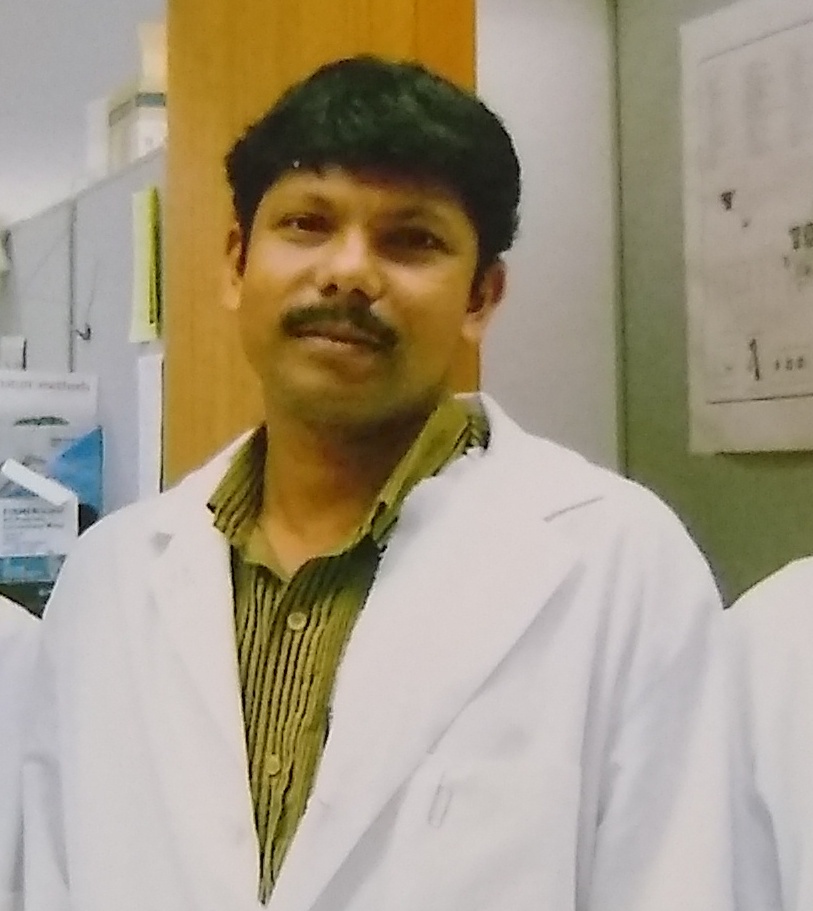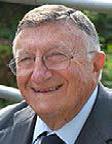Scientific Program
Keynote Session:
Oral Session 1:
- Microorganisms Producing Antibiotics | Veterinary Antibiotics | Toxicity of Antibacterial Drugs | Industrial Scope of Antibiotics
Title: New Class of Antibacterial Ointment against Multi-drug Resistant Pathogens.
Biography:
Santi M. Mandal obtained his Ph D in the field of Molecular Microbiology and continuing research with major focus in Antimicrobial Chemotherapy. He visited UTMB-USA and NUS-Singapore for his postdoctoral training. He worked as an Assistant Professor of Microbiology at Vidyasagar University, India. He has published more than 140 research papers in reputed journals and conferred upon several prestigious awards for his research contribution. Currently, he is engaged at Central Research Facility, Indian Institute of Technology Kharagpur, Kharagpur India.
Abstract:
Wound healing is a complex and dynamin process to restore the tissue layer, simultaneously kill the colonized pathogens and reduce the inflammation level. Ointment is a required medication with antibiotics or any other potential growth factors or anti-inflammatory agents. The conventional ointments are associated with some common problems such as agglomeration, sheathed, competence to poor drug delivery, make stained, immiscible, oil phase ingredients can form lumps, and difficult to wash off. Therefore, it is necessary to make a new type of ointment bases that can overcome those limitations. A new type of ointment base is proposed here, easy and economical to prepare from renewable phenolics. The cross-linked copolymers of biocompatible phenolic derivatives make nanohydrogel which is efficient in drug delivery and free radical scavenging ability. This ointment base itself show off versatile biological activities such as anti-inflammatory, antioxidant, wound healing, antibiofilm and antimicrobial property. Interestingly, the antibiotics resistant bacteria can’t survive due to the synergistic action of nanohydrogel and antibiotics. The strategy makes a significant value in health-care infection management application.
Title: Activity of antibiotics against dormant Mycobacterium tuberculosis
Biography:
Abstract:
Statement of the problem: Tuberculosis (TB) is aninfectious disease caused by Mycobacterium tuberculosis(Mtb). Furthermore, about 2 billion people are latently infected with Mtb, with 10% of them reactivating to active disease. Antibiotic treatments require 6 months of combination therapy with isoniazid (INH)+rifampin (RIF)+pyrazinamide+ethambutol for active TB, and 9 months of INH or 3 months of rifapentine (RFP)+INH for latent TB. In the lungs of active and latent TB patients, cellular and caseous granulomas coexist, with Mtb ranging from aerobic actively replicating (AR) to anaerobic nonreplicating (NR), dormant, cells. Low oxygen pressure restricts growth of aerobic to anaerobic Mtb in cholesterol/triacylglycerolrich, low-vascularized, caseous granulomas, and allowing bacilli to transit into a dormant, drug-refractory, and state. In cellular granulomas, AR cells are killed by current therapy, while in caseous granulomas NR bacilli persist in a dormant state. New research approaches to eliminate NR Mtb surviving after therapy need to be developed, to shorten therapy of active TB below 6 months, and reduce the reservoir of latently infected individuals.
Methodology & Theoretical Orientation: Dormant cells were obtained by the Wayne model of hypoxia at pH 5.8 and 7.3 (mimicking cellular and caseous granulomas, respectively). AR and NR cells were treated with hydrophilic (logP≤0) and lipophilic (logP>0) drugs to find combinations sterilizing both cells, as determined by colony-counts and day-to-positivity (DTP >100 days) in MGIT960 system. Findings: At pH 5.8, lipophilic drugs were more active than hydrophilic agents against NR Mtb, and RIF+moxifloxacin+amikacin+pretomanid sterilized AR+NR cells after 14 days of exposure. At pH 7.3 (pH of caseum), out of 12 antibiotics tested, only RIF and RFP killed NR cells; the search for sterilizing low-lipophilic drug containing combinations is ongoing.
Conclusion and Significance: Overall, Wayne models can be useful for testing drug activity against dormant Mtb to guide the selection of future, shorter, rifamycin-containing therapies.
Title: Detection of a novel mutation G511T in the 530 loop in 16S rRNA in multi drugs resistant Mycobacterium tuberculosis isolated from Sudanese patients
Biography:
1-Yousif Mohammed Alfatih has completed his Bsc from University of science and Technology, Khartoum-Sudan, and Msc at the age of 25 years from, Sudan international University, Khartoum-Sudan.
3-Mohamed Ahmed Salih has completed his PhD in Molecular Genetics, from TUBINGEN UNIVERSITY, Institute of Human Genetics, Tubingen, German, and Postdoctoral Studies from HARVARD UNIVERSITY, Cambridge, MA. One Training fellowship Cancer Biology and Therapeutics Program (HMS-CBT), Harvard Medical School-USA.
Abstract:
Background:
 Tuberculosis (TB) is a bacterial disease considered as a global public health emergency by the World Health Organization (WHO) since 1993. In Sudan, MDR-TB represents a growing threat and one of the most important challenges that faced national tuberculosis program to establish a comprehensive multidrug-resistant tuberculosis management system.
Objective:
 To characterize the diversity and frequency of mutations in Sudanese MDR-TB strains isolated from Wad Madani, Al-Gadarif and Khartoum using 16S rRNA and phylogeny approach.
Material and Methods:
 A descriptive cross-sectional study was carry on total of 60 MDR-TB isolates from Wad-Madani, Al-Gadarif and Khartoum were tested with molecular LPA (Genotype MTBDR plus) and GeneXpert MTB/RIF assay and Spoligotyping to confirm their resistance to RIF and INH. Sequencing and phylogenetic analysis was carried out using in silico tools.
Result:
 This study revealed the circulation of different Sudanese MDR-TB strains isolated from Wad Madani and Al-Gadarif belonging to two distinct common ancestors. Two isolates from Wad Madani (isolate3 and isolate11) found in one main group which characterized by a novel mutation G511T in the 530 loop.
Conclusion:
 The recurrence of C217A mutation in Al-Gadarif (isolate11) indicates the spread of this mutation in Sudanese MDR-TB strains and the diversity of this inheritance leading to generate new G511T novel mutation. So, understanding the molecular characterization of resistance mechanisms in MD-TB can facilitate the early detection of resistance, the choice of appropriate treatment and ultimately the management of MD-TB transmission. Bioinformatics approaches provide helpful tools for analyzing molecular mechanisms of resistance in pathogens.
Title: Amide derivatives of vancomycin to overcome antibiotics resistance
Biography:
Abstract:
Glycopeptide antibiotics were once considered as drug of choice of serious gram positive infections. These antibiotics interrupt bacterial cell wall synthesis to exert their antibacterial effects. They pose higher barrier for drug resistance development, as they target non-protein components of bacterial cell wall. However, these antibiotics are increasingly becoming less effective due to emergence of resistant strains. To address this issue, modification of glycopeptide antibiotics to enhance their activity is therefore a useful strategy to develop new compounds against drugresistant strains. We explored an underutilized reactive site on the glycopeptide antibiotics and developed a simple yet highly efficient scheme to synthesize various analogs. Using this scheme, the C-terminal carboxyl group of vancomycin was reacted with amine compounds to yield carboxamide analogs some of which with improved antibacterial activity upto 100 times. Usually multiple chemical reactions are needed to prepare antibiotic analogs. Our single-step scheme provides a simple yet efficient methodology to develop potent analogs of vancomycin. Different analogs are synthesized by reacting series of diamines with vancomycin.
Title: Antimicrobial use in aquaculture: Patterns and current knowledge on its contribution to the emergence and spread of antimicrobial resistance
Biography:
Abstract:
Aquaculture is a fast-growing industry accounting nowadays for almost half of the fish supplies for human consumption, worldwide. The intensive and semiintensive practices used to produce large stocks of fish, in small spaces, originate frequent disease outbreaks and, to control it, the use of antimicrobials, for prophylactic and therapeutic purposes, is a customary practice. The selective pressure exerted by these drugs – usually present in sub-therapeutic doses for prolonged periods, in water and sediments – represent the ideal framework for the emergence and selection of resistant bacterial strains, promoting and stimulating horizontal gene transfer. Passage of antimicrobial resistant genes and antimicrobial-resistant bacteria from aquatic to terrestrial animal husbandry and to human environments, and vice versa, with detrimental effects on both human and animal health, and also in aquatic ecosystem, is now largely recognized. A global effort must be developed in order to cease antimicrobial overuse in aquaculture, encouraging stakeholders to adopt other disease preventive measures, such as adequate hygiene standards, vaccines or probiotics, among others. Shaping a new path is crucial, in order to contain the increasing threat of antimicrobial resistance. Being antimicrobial resistance a global ecological event, the One Health strategy is the most appropriate way to address and tackle it. As postulated by One Health principle we must recognize that human, animal and environmental health are interconnected, that diseases are transmitted from humans to animals, and vice versa, and must therefore be tackled in both.











